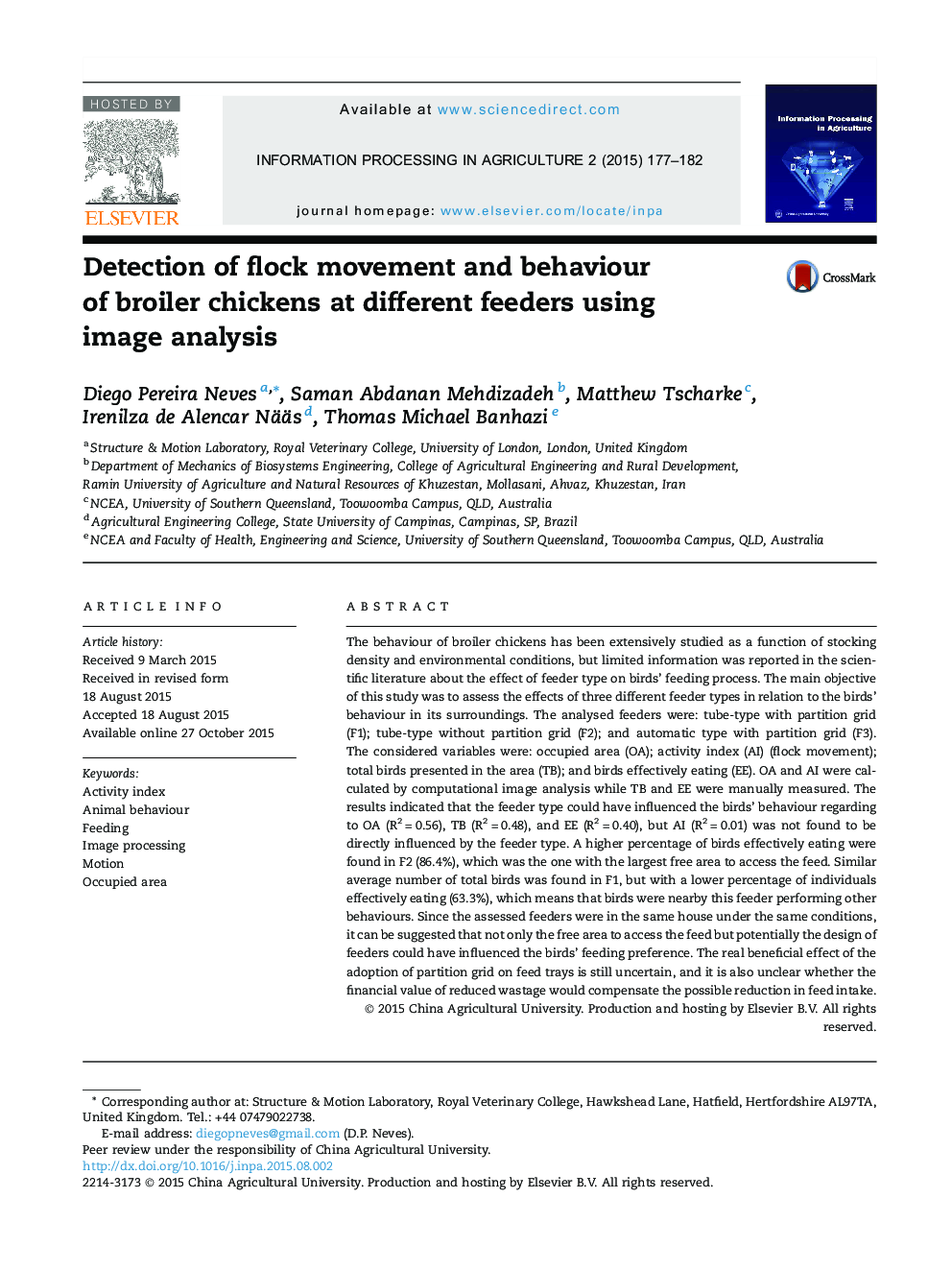| Article ID | Journal | Published Year | Pages | File Type |
|---|---|---|---|---|
| 4493341 | Information Processing in Agriculture | 2015 | 6 Pages |
The behaviour of broiler chickens has been extensively studied as a function of stocking density and environmental conditions, but limited information was reported in the scientific literature about the effect of feeder type on birds’ feeding process. The main objective of this study was to assess the effects of three different feeder types in relation to the birds’ behaviour in its surroundings. The analysed feeders were: tube-type with partition grid (F1); tube-type without partition grid (F2); and automatic type with partition grid (F3). The considered variables were: occupied area (OA); activity index (AI) (flock movement); total birds presented in the area (TB); and birds effectively eating (EE). OA and AI were calculated by computational image analysis while TB and EE were manually measured. The results indicated that the feeder type could have influenced the birds’ behaviour regarding to OA (R2 = 0.56), TB (R2 = 0.48), and EE (R2 = 0.40), but AI (R2 = 0.01) was not found to be directly influenced by the feeder type. A higher percentage of birds effectively eating were found in F2 (86.4%), which was the one with the largest free area to access the feed. Similar average number of total birds was found in F1, but with a lower percentage of individuals effectively eating (63.3%), which means that birds were nearby this feeder performing other behaviours. Since the assessed feeders were in the same house under the same conditions, it can be suggested that not only the free area to access the feed but potentially the design of feeders could have influenced the birds’ feeding preference. The real beneficial effect of the adoption of partition grid on feed trays is still uncertain, and it is also unclear whether the financial value of reduced wastage would compensate the possible reduction in feed intake.
